Air Conditioner Thermostat
₹1,199.00 – ₹4,499.00
Introduction to Air Conditioner Thermostats
Air conditioner thermostats serve as critical components in home cooling systems, playing a pivotal role in maintaining indoor comfort. Essentially, a thermostat is a device that monitors and regulates home temperature, ensuring that the environment remains within the desired range. By measuring the ambient temperature, thermostats enable air conditioning units to operate more efficiently, contributing to both comfort and energy savings.
The functionality of thermostats is rooted in their ability to detect temperature changes. When the indoor temperature rises above the set point, the thermostat sends a signal to activate the air conditioning system, prompting it to cool the air until the desired temperature is reached. Conversely, if the temperature falls below the selected setting, the thermostat may switch off the air conditioning, thus preventing unnecessary energy consumption. This cycle of activation and deactivation ensures that homes remain at a comfortable temperature while optimizing energy usage.
The evolution of air conditioner thermostats has significantly changed the landscape of home climate control. Initially, thermostats were simple, manual devices requiring users to set the temperature manually, often resulting in less precise temperature control. Over time, advancements in technology have led to the development of programmable and smart thermostats. Programmable thermostats allow homeowners to set different temperatures for various times of the day, tailoring cooling schedules to their lifestyles. On the other hand, smart thermostats take it a step further by utilizing Wi-Fi connectivity, enabling remote temperature adjustments through mobile devices and learning capabilities that adapt to users’ preferences.
This transition from manual to smart thermostats has not only improved the efficiency of air conditioning systems but has also empowered homeowners to take control of their energy consumption, paving the way for a more sustainable approach to indoor climate management.
Types of Thermostats
Thermostats play a crucial role in regulating your air conditioning system, ensuring optimal comfort and energy efficiency inside your home. Understanding the different types available can help you make informed decisions regarding installation and usage. Generally, thermostats can be categorized into three main types: mechanical, digital, and smart thermostats.
Mechanical thermostats are the most traditional form of temperature control. These devices typically use a bimetallic strip that expands or contracts with temperature changes, triggering the heating or cooling system as needed. While they are generally affordable and simple to operate, mechanical thermostats often lack precision and may not respond as quickly as their counterparts. As a result, these thermostats are best suited for individuals who prefer a basic solution without advanced features.
Digital thermostats represent a step forward in technology, offering a more accurate and user-friendly interface. These devices utilize electronic sensors to register temperature changes and provide precise control settings. Many digital thermostats include programmable options, meaning users can set different temperatures for various times of the day, thus enhancing energy efficiency. The downside is that they can be more expensive than mechanical thermostats, making them a moderate investment for homeowners looking for better control over their climate.
Finally, smart thermostats incorporate advanced technologies and connectivity features. They can be controlled remotely via smartphone applications, allowing homeowners to adjust their air conditioning systems conveniently. Furthermore, many smart options learn user preferences over time, optimizing temperature settings automatically based on patterns of occupancy. This integration with home automation systems not only enhances user control but also promotes significant energy savings. While initially higher in cost, the long-term benefits—in terms of convenience and energy efficiency—often justify the investment.
How to Properly Set Your Thermostat
Setting your thermostat correctly is crucial for maintaining an ideal indoor climate while optimizing energy usage. One of the initial steps to achieving comfort and efficiency is to establish a suitable temperature range. During the summer months, the recommended thermostat setting is around 75 to 78 degrees Fahrenheit. This temperature strikes a balance between comfort and energy savings, allowing your air conditioning system to operate efficiently without overburdening itself.
Conversely, in the winter, keeping the thermostat set between 68 to 70 degrees Fahrenheit provides a warm and cozy environment while conserving energy. Notably, each degree adjustment can impact your energy costs, with higher settings in summer leading to increased power consumption. Thus, aim for minor adjustments to avoid significant changes in energy expenditure.
In addition to seasonal settings, consider your daily occupancy patterns when programing your thermostat. For instance, if your home is typically unoccupied during the day, adjusting the thermostat to a higher (or lower, in winter) temperature can lead to substantial energy savings. Many modern thermostats feature programmable options that allow you to set different temperatures for various times of the day. An automated system can efficiently adapt to your lifestyle, ensuring that your home’s climate is comfortable when you need it while reducing energy usage when it’s not in use.
Furthermore, it is advisable to avoid setting the thermostat to extremely low or high temperatures in an attempt to heat or cool your home more quickly. Such a practice can strain the system and increase energy costs. Instead, aim for gradual changes throughout the day, optimizing comfort without sacrificing efficiency. This approach not only benefits your air conditioning unit by prolonging its lifespan but also promotes a more sustainable use of energy resources.
Troubleshooting Common Thermostat Issues
Air conditioner thermostats play a crucial role in managing indoor temperature and ensuring comfort. However, users may encounter various issues that can affect the performance of their systems. Common problems include inaccurate readings, unresponsive controls, and communication failures with the AC unit. By understanding these issues, homeowners can take appropriate steps to troubleshoot and resolve them, often without needing to call a professional.
One frequent issue is inaccurate temperature readings. If the thermostat shows a temperature that feels different from the actual room temperature, it may be located near sources of heat or cool air, such as sunlight or drafts. To address this, homeowners should check the placement of the thermostat and consider relocating it to a more central location away from these influences. Additionally, dirty sensors can lead to incorrect readings. Regularly cleaning the thermostat can help ensure accurate performance.
Unresponsive controls are another common malfunction. If the thermostat doesn’t respond when adjustments are made, it could be due to dead batteries or a tripped circuit breaker. Homeowners should first replace the batteries, if applicable, and check the circuit breaker to ensure that power is flowing to the unit. If the problem persists, recalibrating the thermostat might be necessary. Many thermostats come with a calibration feature that can be accessed via the settings.
Finally, communication failures between the thermostat and the AC unit can disrupt the cooling process. This can occur due to loose wiring or outdated software in smart thermostats. Inspecting the wiring for any signs of fraying or disconnection is advisable. For smart thermostats, checking for available software updates through the manufacturer’s app can resolve compatibility issues. Regular maintenance, including scheduled check-ups, can significantly reduce the likelihood of these common thermostat problems, ensuring efficient operation for years to come.
The Future of Air Conditioner Thermostats
As air conditioning technology advances, the future of thermostats looks increasingly sophisticated, largely driven by innovations in machine learning and artificial intelligence. These emerging technologies promise to revolutionize how we manage temperatures in our homes, transforming simplistic temperature control into predictive cooling systems that ensure both comfort and efficiency. With AI integration, modern thermostats can learn patterns in temperature preferences, adjusting themselves automatically based on user behavior and environmental conditions.
One of the most promising aspects of these next-generation thermostats is their ability to optimize energy consumption. By analyzing historical usage data, machine learning algorithms can minimize energy waste while maximizing comfort levels. This means that homes equipped with such smart thermostats not only enjoy a more personalized indoor climate but also contribute to reduced energy bills as well as a more sustainable environment. It is estimated that households utilizing programmable and smart thermostats can save approximately 10-15% on their heating and cooling costs, highlighting the financial benefits of these advanced systems.
Furthermore, advancements in the Internet of Things (IoT) are paving the way for even more interconnected home environments. Future thermostat models will be able to communicate seamlessly with other smart devices, allowing for a more holistic approach to home management. For example, a thermostat could work in conjunction with smart blinds to adjust indoor temperatures based on sunlight exposure, thereby enhancing both comfort and efficiency.
In addition to these features, developments in user interfaces are expected to become more intuitive, making it easier for homeowners to interact with their air conditioning systems. Touchscreen displays, mobile apps, and voice-command functionalities will likely be standard, providing users with even more control over their home environment. As technology continues to evolve, the way we interact with air conditioning systems will undoubtedly become more streamlined and efficient, emphasizing enhanced comfort alongside significant energy savings.
| Brand Name | Amazonbasics, Blue Star, BPL, Carrier, Croma, Cruise, Daikin, Electrolux, Godrej, Gree, Haier, Hisense, Hitachi, Hyundai, IFB, Impex, Intex, Kelvinator, Koryo, LG, Livpure, Lloyd, MarQ by Flipkart, Micromax, Midea, Mitashi, Mitsubishi, Motorola, Nokia, O General, Ogeneral, Onida, Panasonic, Realme, Realme TechLife, Samsung, Sansui, Singer, TCL, Thomson, Toshiba, Trane, Vestar, Videocon, Voltas, Whirlpool, White Westinghouse |
|---|---|
| Capacity | 1 Ton To 1.5 Ton, 2 Ton |
| Type | Inverter Split, Inverter Window, Split, Window |
| No Of Thermostat Sensor | 1 Unit, 2 Units, 3 Units, 4 Unites |
1 review for Air Conditioner Thermostat
Only logged in customers who have purchased this product may leave a review.
Related products
-
Air Conditioner Parts
Air Conditioner Expansion Valve
₹2,499.00 – ₹4,499.00 Select options This product has multiple variants. The options may be chosen on the product pageRated 5.00 out of 5 -
Air Conditioner Parts
Air Conditioner Blower Motors
₹3,999.00 – ₹7,199.00 Select options This product has multiple variants. The options may be chosen on the product pageRated 5.00 out of 5 -
Air Conditioner Parts
Air Conditioner Fan Motor
₹3,499.00 – ₹8,999.00 Select options This product has multiple variants. The options may be chosen on the product pageRated 5.00 out of 5 -
Air Conditioner Parts
Air Conditioner Condenser Coils
Rated 5.00 out of 5₹19,999.00Original price was: ₹19,999.00.₹18,999.00Current price is: ₹18,999.00. Select options This product has multiple variants. The options may be chosen on the product page

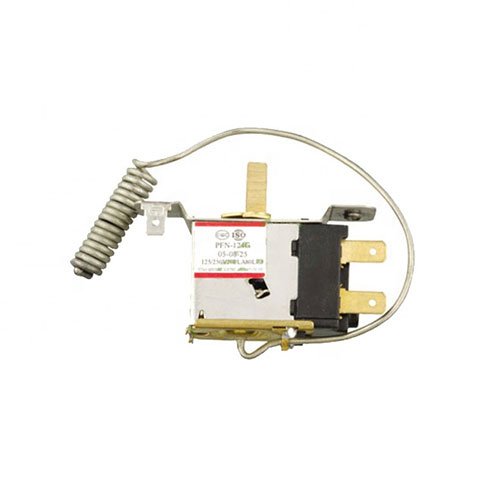
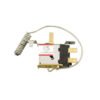
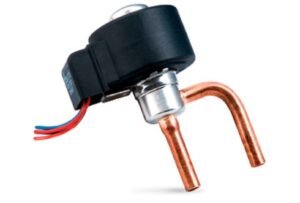
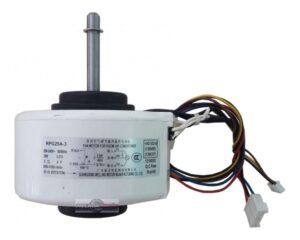
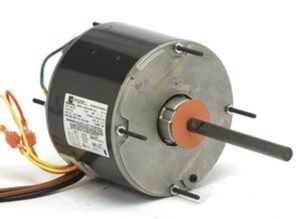
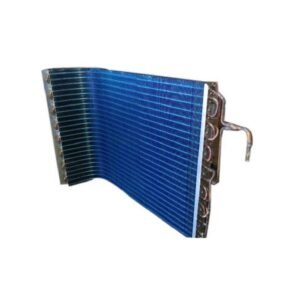
Vrinda Patel (verified owner) –
Highly recommend this warranty for comprehensive protection and great customer service.